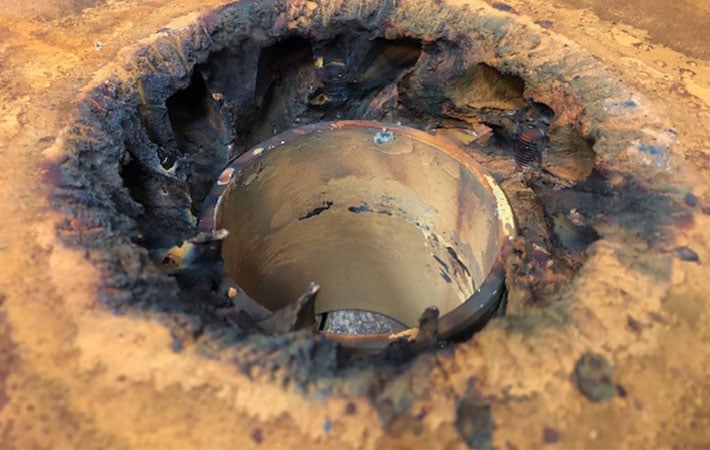

Have a pump that makes popping sounds, or sounds like it's pumping marbles? If so, you may have a cavitation problem. Pump cavitation can cause a number of issues for your pumping system, including excess noise and energy usage, not to mention serious damage to the pump itself.
Simply defined, cavitation is the formation of bubbles or cavities in liquid, developed in areas of relatively low pressure around an impeller. The imploding or collapsing of these bubbles trigger intense shockwaves inside the pump, causing significant damage to the impeller and/or the pump housing.
If left untreated, pump cavitation can cause:
There are two types of pump cavitation: suction and discharge.

When a pump is under low pressure or high vacuum conditions, suction cavitation occurs. If the pump is "starved" or is not receiving enough flow, bubbles or cavities will form at the eye of the impeller. As the bubbles carry over to the discharge side of the pump, the fluid conditions change, compressing the bubble into liquid and causing it to implode against the face of the impeller.
An impeller that has fallen victim to suction cavitation will have large chunks or very small bits of material missing, causing it to look like a sponge. Damage to the impeller appears around the eye of the impeller when suction cavitation is present.
Possible causes of suction cavitation:

When a pump's discharge pressure is extremely high or runs at less than 10% of its best efficiency point (BEP), discharge cavitation occurs. The high discharge pressure makes it difficult for the fluid to flow out of the pump, so it circulates inside the pump. Liquid flows between the impeller and the housing at very high velocity, causing a vacuum at the housing wall and the formation of bubbles.
As with suction cavitation, the implosion of those bubbles triggers intense shockwaves, causing premature wear of the impeller tips and pump housing. In extreme cases, discharge cavitation can cause the impeller shaft to break.
Possible causes of discharge cavitation:
If pumps experience cavitation, check these things to troubleshoot the problem on your own:
For more information about how to detect and prevent pump cavitation, be sure to check out our post: Technologies To Detect and Prevent Pump Cavitation.
Cavitation is a common problem in pumping systems, but with proper pump sizing, pipe design, and care of filters and strainers, damage to pumps and their impellers can be largely avoided.
Gorman Rupp Pumps uses a glass faced demo pump to train groups on cavitation. See it in action below.
These Stories on Equipment Maintenance
Headquarters and Service Center
Located outside Green Bay, WI
707 Ford Street
Kimberly, WI 54136
920-733-4425
OptiFlow Design and Build Center
1002 Truman Street
Kimberly, WI 54136
920-733-4425
Burnsville Service Center
12265 Nicollet Avenue
Burnsville, MN 55337
952-444-1949
Grand Rapids Service Center
26489 Industrial Blvd
Cohasset, MN 55721
952-444-1949
© Copyright 2024. Crane Engineering. All Rights Reserved. Privacy Policy.